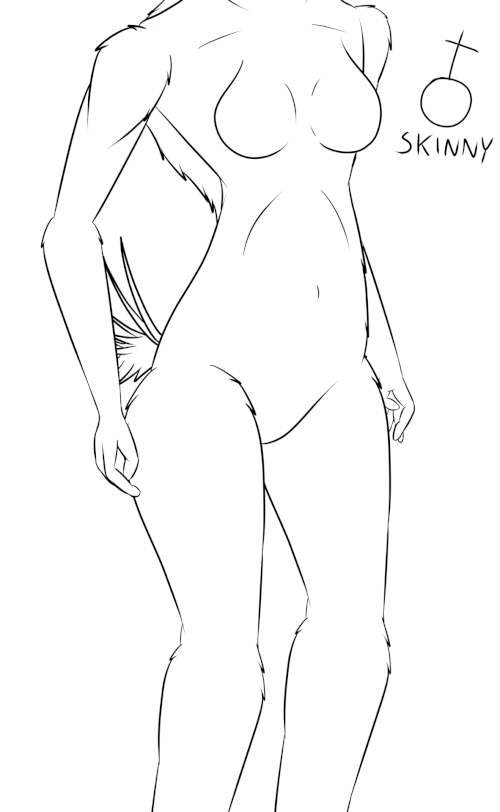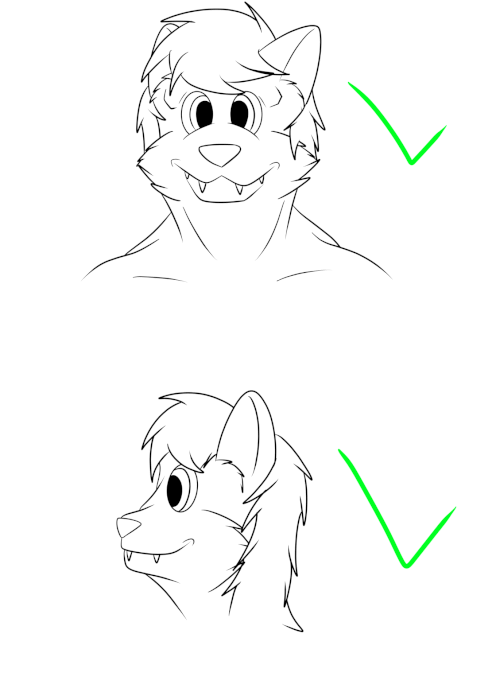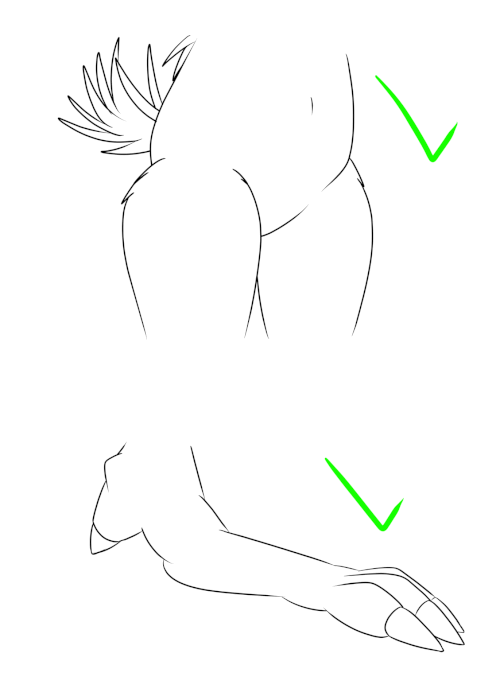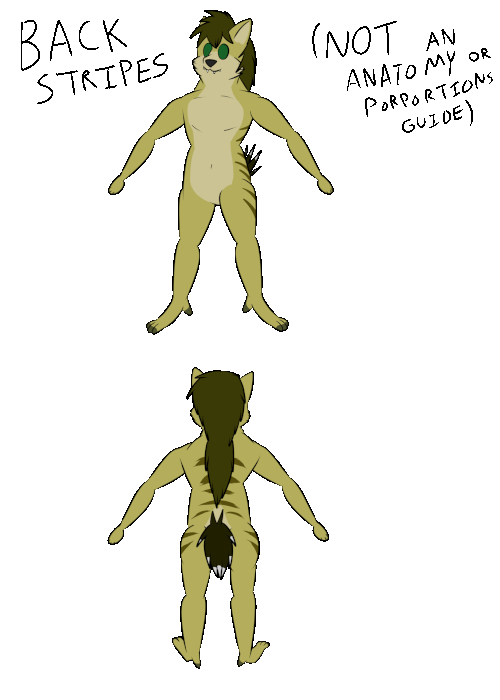>HUNT-OS V 2.15.1 - USER PROFILE: Grey Windstorm
-Viewing Wiki
Loaded Article: TraitsAndBehavior.html:
>_
Common Characteristics
Arpines are bipedal and stand around 6'3"-7'2" on average. They are fully covered in fur and also possess a mane that covers the top of their heads to mid back. Arpines also have quills in their lower back area. Arpines have claws on their feet and hands (the hand claws being retractable). Their heads are somewhat blocky shaped with short snouts which house long canines (four on both the top and lower jaw, eight total), sharp incisors, and bone-crushing molars.
Arpines also have concentrated muscle mass in their necks, arms, and upper legs. They have a fatty layer over their muscle mass giving a deceptively soft appearance hiding their true strength. This fatty layer varies in density and thickness depending on seasonal and environmental factors. Their fur comes in a variety of patterns which also thickens and thins with environmental factors.
Head and Neck
An arpine's head is somewhat blocky shaped complete with pointed ears and a protruding snout. Their snout tends to be short and blunt on average while their heads tend to appear bulkier around the equator, although some arpines with narrower heads and slightly longer snouts do exist. An arpine's neck and cheeks are packed with jaw muscles which deliver a devastating bone-crushing bite force said to be comparable to a hyena.
Their mouth has two sets of canines on both jaws and a slight overbite which makes the upper canines visible when their mouth is closed. These canines are for piercing and gripping deep within the flesh of live prey. Their incisors are jagged-shaped and excel at tearing flesh while their molars are specialized to thoroughly chew and crush the toughest of bones. While the true extent of an arpine's teeth are often hidden scrunched lips or gaping expressions can reveal more or the full set of large teeth.
Body
Arpines have the largest percentage of their strength in their lower body and around their shoulders: namely their thighs, legs, neck, and upper arms. Arpines are built for bursts of speed and have an average maximum running speed of 19 mph (4.13 clocks), although this speed is in short sprints while their average sustained running speed is closer to 13 mph (2.83 clocks). Meanwhile the fastest ever recorded sprint for an arpine athlete was 36 mph (7.83 clocks). Another important purpose of the placement of their body strength is to navigate rough terrain where they mostly use their upper strength for leverage and their lower body strength to push them along. Their speed, climbing, and jumping abilities are also aided greatly by the structure of their feet which are structured to be flexible which helps them in varied terrain. The arpine foot also includes an extra claw on their upper heel for added stability and coming to short stops.
The great strength in their upper arms, combined with their larger overall size, means on average they can lift 3x more weight than a human. With this strength they can also deliver devastating blows with their firsts as well as being capable of a very tight "hugging" grip which allows them to hang onto and tackle prey.
The muscle mass of an arpine is often hidden underneath a fatty layer which gives them their deceptively soft appearance, this fat keeps their inner bodies warm and protected and varies with environment and seasons. The healthy arpine physique is considered to be anywhere from slightly muscular to moderately chubby.
Common body types Guide
MBodyTypes.gif
|
FBodyTypes.gif
|
The most common body types associated with arpines. The average build of an arpine consists of strong muscles which are usually hidden by a layer of fat giving a "smooth" appearance. Having some body fat is considered healthy to an arpine and having body fat is considered conventionally attractive, although more athletic builds (which have the same muscle mass as the average build but less fat) and skinny builds (also lesser in muscle mass) exist. Because of the active lifestyle of arpines and sometimes longer periods between meals it is difficult for an arpine to actually become obese, and it's rare to see an arpine fatter than "plump".
Head + Neck Guide
HeadNeckRef.gif

Remember that arpine necks are packed with muscles that directly connect to their jaw giving them their bone-chewing bite force. When drawing the necks of arpines it is important to make the neck thick and muscular and avoid making them thin and human-like.
Also remember that arpines have short blunt snouts. When drawing their snouts make sure to avoid drawing them like the typical anthro canid. Also remember that they have four canines exposed on the top row instead of the typical two commonly associated with other anthros.
Waist + Feet Guide
WaistFeetRef.gif

The waist of arpines should be drawn with wider and round upper thighs and avoid drawing them too humanlike. These upper leg muscles are the key behind their bursts of speed as well as their ability to climb and carry their body over rough terrain.
The feet of arpines are not shaped like human feet or like typical furry "paws". They should be drawn longer and "kangaroo-like" with large round claws and a large spur claw under their heel. Their feet can be posed to deal with a wide variety of terrain and also for scenarios like running and climbing. The heel can raise for running, the foot can change it's shape to grip onto the terrain, and the toe claws and heel spur can act as cleats.
Claws, Mane, and Quills
Arpines have quills that are most commonly found on their lower backs. Quills are a recessive trait leftover from an evolutionary ancestor that lived when megafauna were more prevalent, although they occasionally still do find some use. Due to the recessive nature of the trait the coverage and length of an arpine's quills can vary greatly from individual to individual, making it so quills could cover their entire lower back or they could also have no quills on their backs at all. However, all arpines have quills on their tails and a few arpines might have quill overgrowth that extends beyond the lower back including a few quills growing in unusual areas such as the upper legs and arms.
Arpines all possess a mane that normally extends from the middle back to the top of the head. This mane can also vary in length and coverage and is commonly stylized similar to hair. The purpose of this mane in the wild is unknown and it's probable it might be for extra warmth or pest-defense, but some argue it might just be an evolutionary quirk.
Arpines have claws on their hands and feet. The claws on their hands are sharp and retractable and the main purpose for these claws is hunting, attack, and defense. The claws on their feet are non-retractable and are more bluntly shaped, the main purpose of these claws is stability and grip. Their heel claw can serve the same purpose of a cleat. Despite the foot claws being more blunt they can still deliver serious trauma.
Fur Color and Patterns
Naturally arpine fur comes in a wide variety of colors. A range of yellows to brownish reds are common, although shades of white and grey are also common colors. Typically, arpines will have a lighter hue around the muzzle and down the belly while their mane typically has a darker hue, but some arpines can come in a solid color. Fur patterns can vary from a more plain coat to having stripes, spots, blotches, areas of different shades, and some other patterns. Arpines may also have longer or shorter fur, depending on different factors such as climate, and may even grow thicker and thinner coats in response to the seasons.
FurPatterns.gif

Some basic fur patterns that can be used on arpines. Different color combinations can occur with these fur patterns and mixes of fur patterns can occur, so fur colors and patterns do not need to be limited to this. Some arpines also dye their fur too. There are more fur patterns that will be added in future updates.
Senses
Arpines have very good senses of vision, hearing, and smell. Arpines can see in a wide array of colors and have vision 5x sharper than that of humans thanks to having evolved small receptors in their eyes offering high resolution, they are also very sensitive to detecting motion and hidden objects. However, their vision is also higher exposure and operates best in dim lighting as arpines typically hunt and are more active in dim or low light conditions. Bright lighting will appear more color-smeared and washed-out and peak sunlight may even cause eyestrain. They also have the added benefit of being able to see more stars and nebulae than humans.
Arpines have a very good sense of smell which is focused on picking up scents of animals and other arpines. Arpine ears are also much more sensitive than humans and have the ability to rotate their ears to detect sound, sometimes being able to hear prey movements from 10 or more miles away. However, this hearing sensitivity makes them more bothered by persistent loud or grating sounds.
An arpine's sense of taste finds fresh carcass or live prey appetizing. They also dislike cooked meat, finding it to taste terrible (cooking also reduces nutritional value for arpines), and also find the taste of plant material and sugar disgusting and only consume plant matter for medicinal purposes. An arpine's sense of feel is probably their weakest sense, however, as being less sensitive to the touch helps them thrive in more various environments and makes them more tolerant of the "gross" factor of consuming live kill and carcasses. They still are sensitive to pressure, however, and they do have some sensitive areas around their neck where they often will affectionately nip each other in "love bites".
Mind, Behavior, and Socialization
Arpines at first come across as simple and primitively-minded but in reality have complex minds capable of complicated behaviors and nuanced thoughts. Arpines are receptive to simple joys and pleasures, generally speaking, and value their self worth, well-being, and personal goals. They go through their whole lives attempting to hone and improve their own abilities and experience new things. This mentality is thought to have evolved to be as a way for arpines to be more versatile as a species and individually optimize themselves within the wide diversity of situations and environments found on Krathal. Due to this sense of healthy individualism arpines also despise the idea of inherent hierarchy, respect others' space, and often take things into their own hands.
This isn't to say they do not collaborate in groups or have any sort of community or leadership, however, but rather groups and collaboration are based on the idea of mutual respect and leaders typically are determined by a situation rather than by inherent hierarchy. Arpines also form close bonds with other arpines that they will maintain their whole life. While arpines are willing to work with and even closely bond with other arpines they may also compete with others for various reasons. Overall they pride themselves on self-reliance but they still form strong friendships with those they get along with and commonly form small tight-knit communities. They are also often seen traveling in pairs.
Arpines prefer a more natural environment as opposed to an artificial one and feel a need to answer to their primal impulses and desires in order to keep their rational minds healthy and balanced. Arpines also are notably claustrophobic: crowded and cramped conditions as well as high population density cause them much discomfort and they have a very difficult time thriving under such conditions. As one can guess, most arpines particularly dislike living in cities, and arpine communities either exist as small towns blending into the natural landscape or if they do live in larger cities such cities are low-density or the arpines live on the outskirts or in the exurbs.